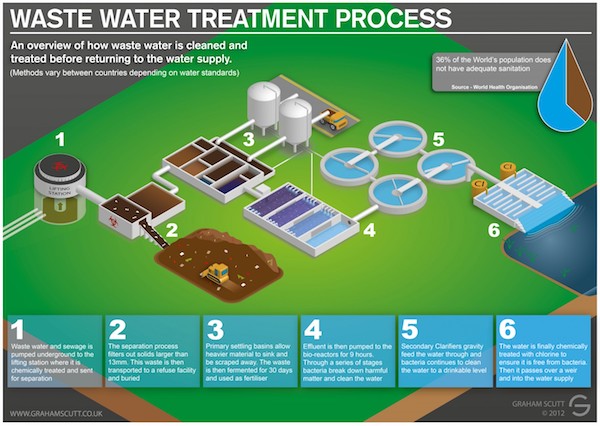The Definitive Guide for Residential Water Treatment System
Table of ContentsOur Residential Water Treatment System IdeasResidential Water Treatment System Fundamentals Explained10 Easy Facts About Residential Water Treatment System ShownA Biased View of Residential Water Treatment System
1 The demand for large water treatment, Water treatment is the process of getting rid of all those materials, whether biological, chemical or physical, that are possibly hazardous in water supply for human and domestic use. Water additionally needs to be non-corrosive, meaning it will certainly not trigger damage to pipework.This produces a demand for large quantities of safe water to be provided reliably and consistently, and this need is expanding. As urban populations increase, there is a requirement to find new sources to fulfill the growing need. If groundwater is offered this can often be utilized with minimal therapy yet any surface area water resource will certainly need to be dealt with to make it secure.
6 explains how this calculation is made yet first you will take a look at the primary stages in the water treatment procedure. 5. 2 Stages in large water treatment, There are usually seven steps (Figure 5. 2) in large-scale water treatment for metropolitan local water (Abayneh, 2004). Each of the steps will certainly be described in turn in this section.

The Best Guide To Residential Water Treatment System
Below the water is gently mixed by paddles in a flocculation basin (Figure 5. 5) as well as the flocs come right into call with each various other to develop bigger flocs. The flocculation container typically has a variety of compartments with lowering mixing rates as the water breakthroughs with the container (Figure 5.
5 Filtering, Purification is the process where solids are divided from a liquid. In water therapy, the solids that are not separated out in the sedimentation tank are gotten rid of by passing the water with beds of sand and also gravel.
7), with a circulation rate of 48 cubic metres per square metre of filter surface per hr (this is created as 48 m3 m2 h1) are often used. When the filters are complete of caught solids, they are backwashed. In this procedure, clean water as well as air are pumped in reverse up the filter to displace the caught pollutants, and also the water carrying the dust (referred to as backwash) is pumped into the sewerage system, if there is one.
5.2. 6 Chlorination, After sedimentation, the water is sanitized to remove any staying pathogenic micro-organisms. The most commonly made use of disinfectant (the chemical used for sanitation) is chlorine, in the form of a liquid (such as sodium hypochlorite, Na, OCl) or a gas. It is fairly low-cost, as well as straightforward to make use of.
Facts About Residential Water Treatment System Uncovered
The quantity of chlorine left after this is called residual chlorine. This remains in the water completely through the circulation system, protecting it from any micro-organisms that may enter it, up until the water reaches the customers. World Health Organization Guidelines (THAT, 2003) recommend a maximum recurring chlorine of 5 mg l1 of water.

7 Supplementary treatment, Additional therapy might often be required for the advantage of the populace. One such instance is the fluoridation of water, where fluoride is contributed to water. It has actually been stated by the Globe Health And Wellness Organization that 'fluoridation of water supplies, where feasible, is one of the most blog here efficient public health and wellness measure for the avoidance of dental degeneration' (WHO, 2001).

Residential Water Treatment System Things To Know Before You Get This
5 mg l1. What does excess fluoride in the water lead to? As stated in Research Session 2, in kids it can create bespeckling of teeth and long term exposure can create skeletal fluorosis and also debilitating. In such high-fluoride locations, elimination or reduction of fluoride (labelled defluoridation) is important. The easiest means of doing this is to mix the high-fluoride water with water that has no (or extremely little) fluoride so that the final mix is risk-free - residential water treatment system.
Both chemicals are contributed to as well as swiftly mixed with the fluoride-contaminated water and then Your Domain Name the water is stirred delicately. Flocs of aluminium hydroxide form as well as these get rid of the fluoride by adsorption and also ion exchange. The flocs are then gotten rid of by sedimentation. 5.3 Monitoring of wastes from water therapy plants, From the water therapy process that you have simply examined, make a checklist of the various wastes that occur.
In the last it is added to the inbound sewage, where it can assist settlement of solids. The backwash from the sand filter is released right into the sewage system or gone back to the river after negotiation of solids. Product packaging waste such as chemical drums can be returned to the distributor for reuse.
5.4 Sustainability and resilience in water treatment, In Research study Session 4 you check out about some factors that can influence the sustainability of a water source. Minimizing dirt erosion by growing trees and also keeping plant life can lower the quantity of silt that accumulates in a reservoir and also lengthen its life. residential water treatment system.